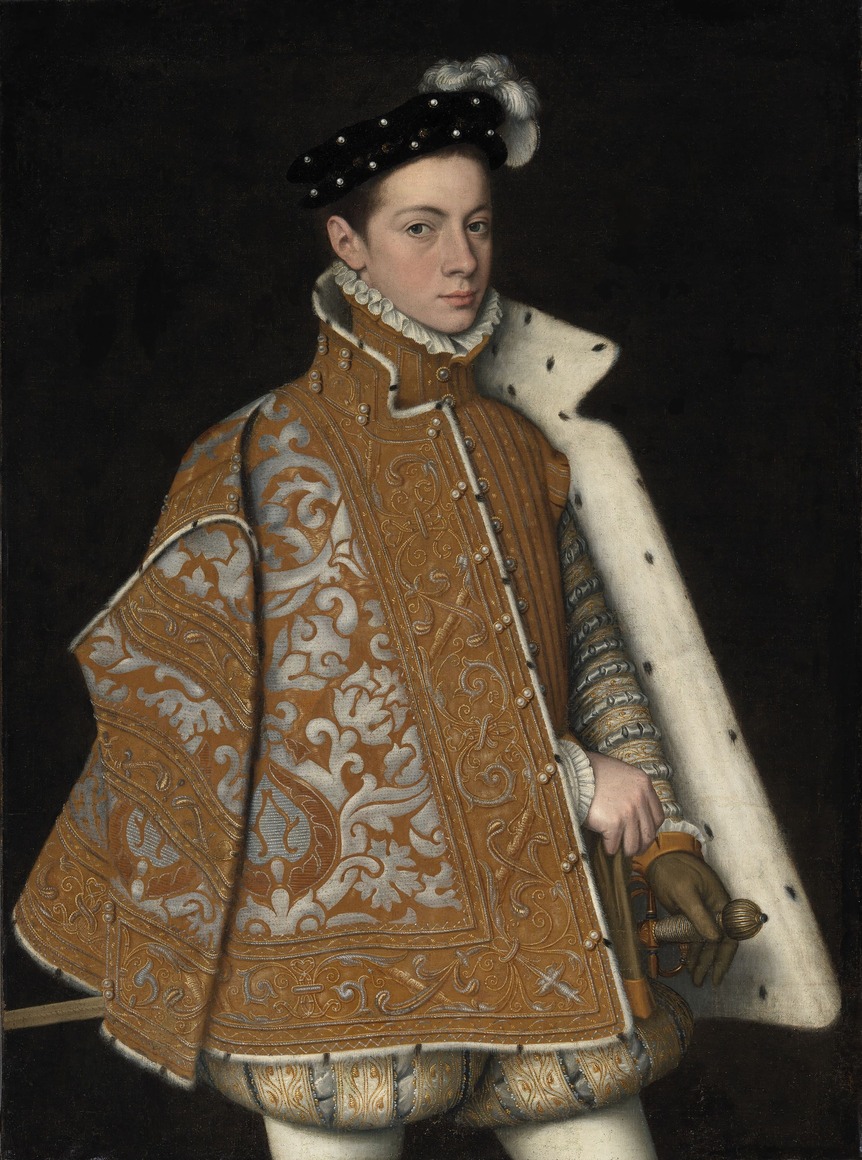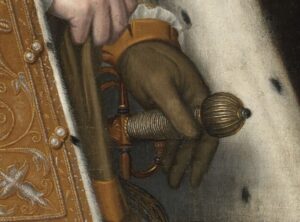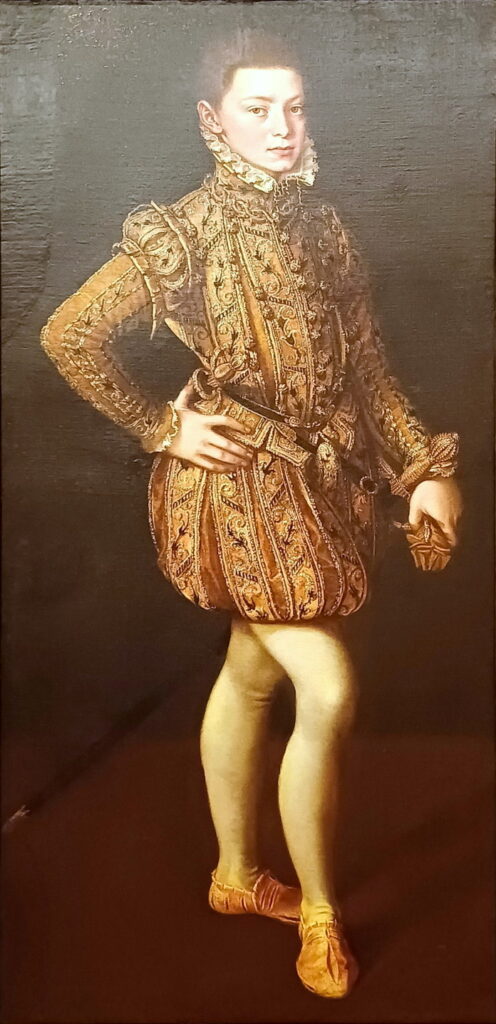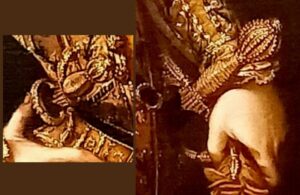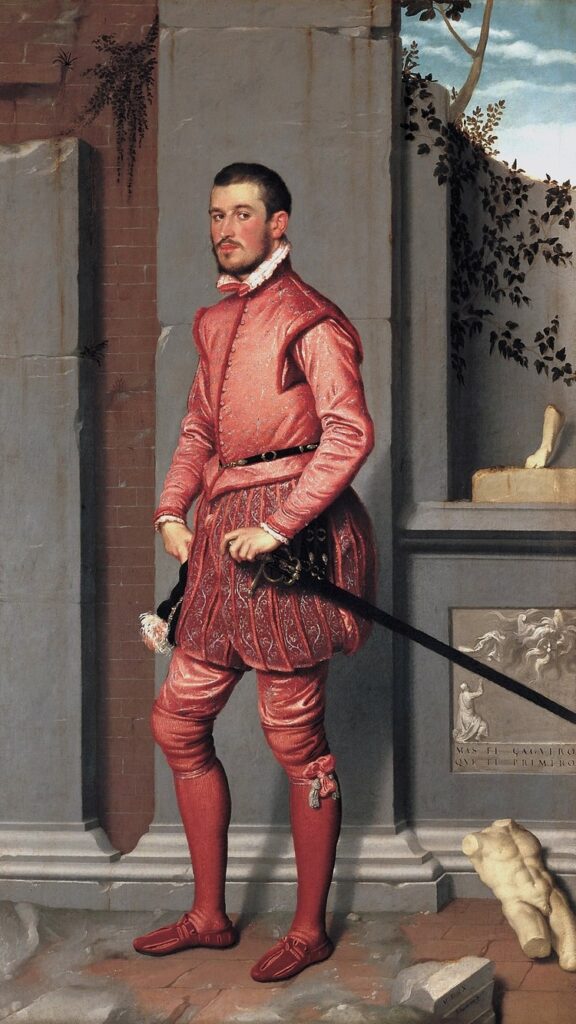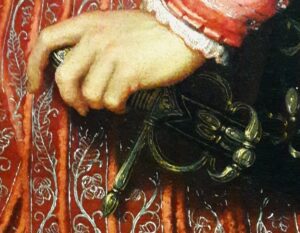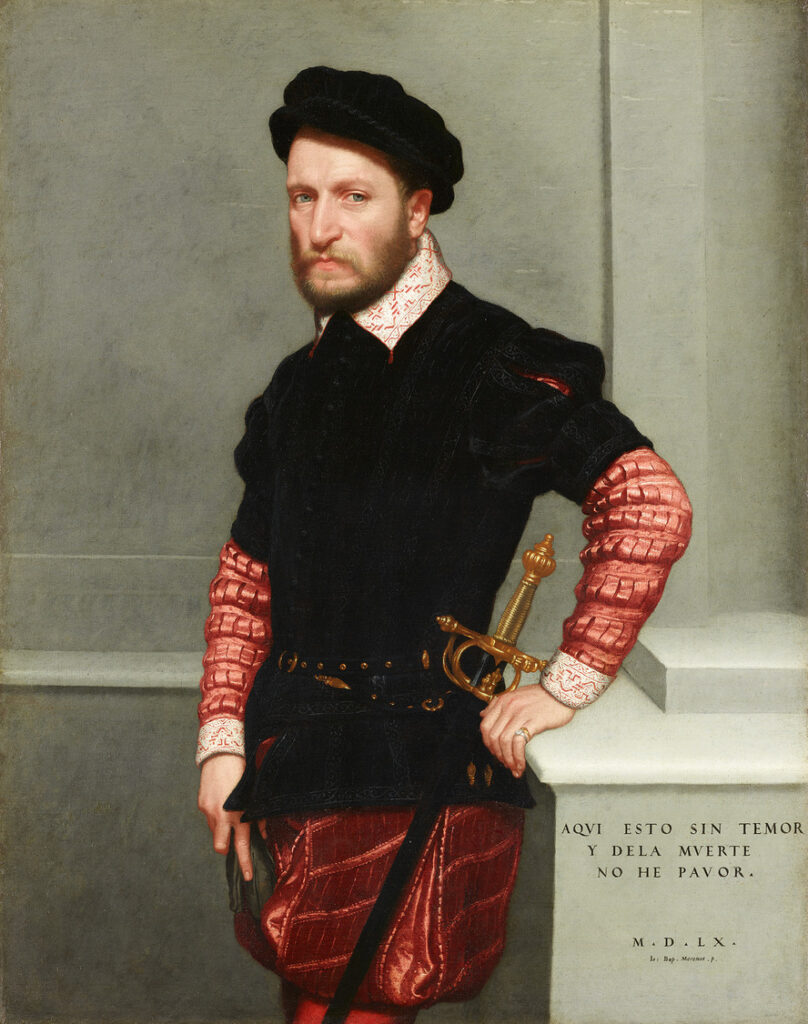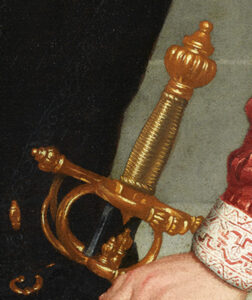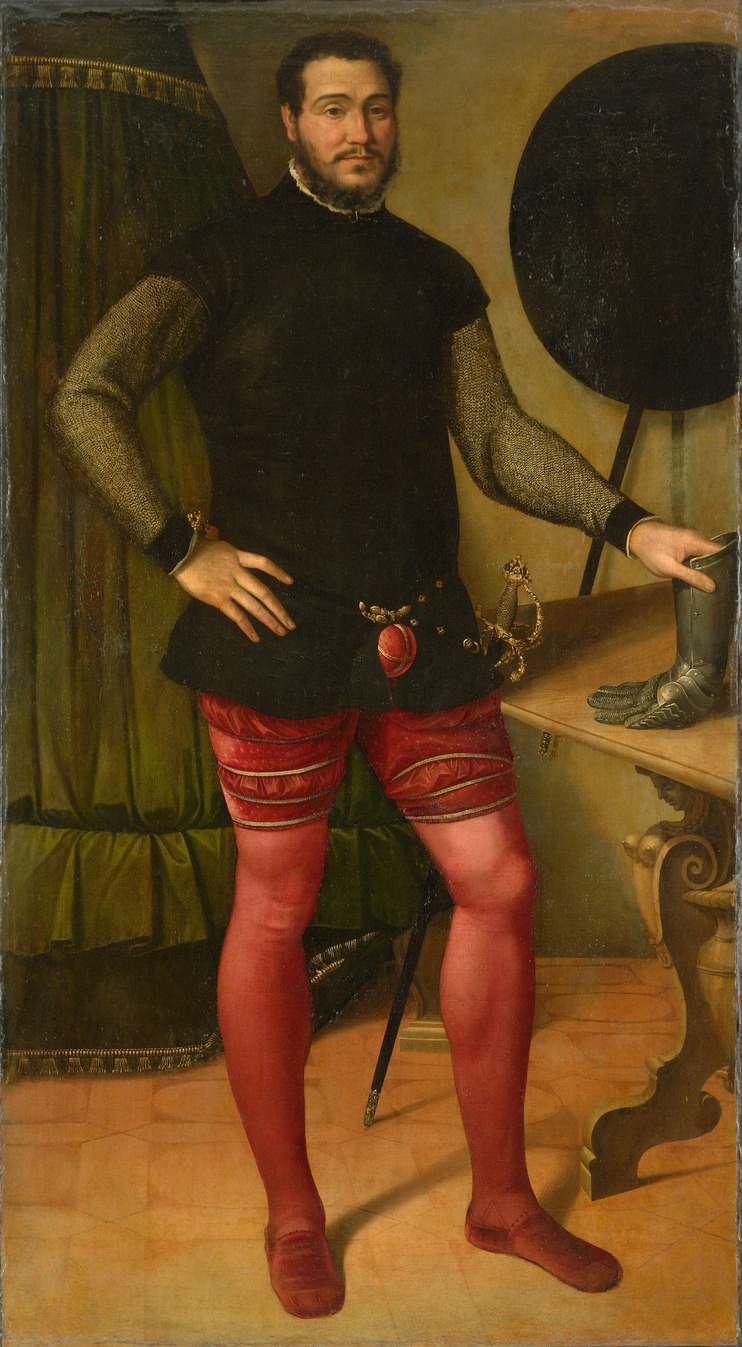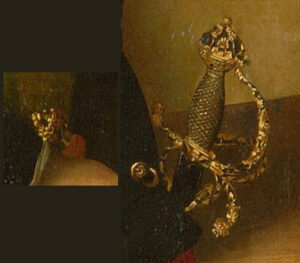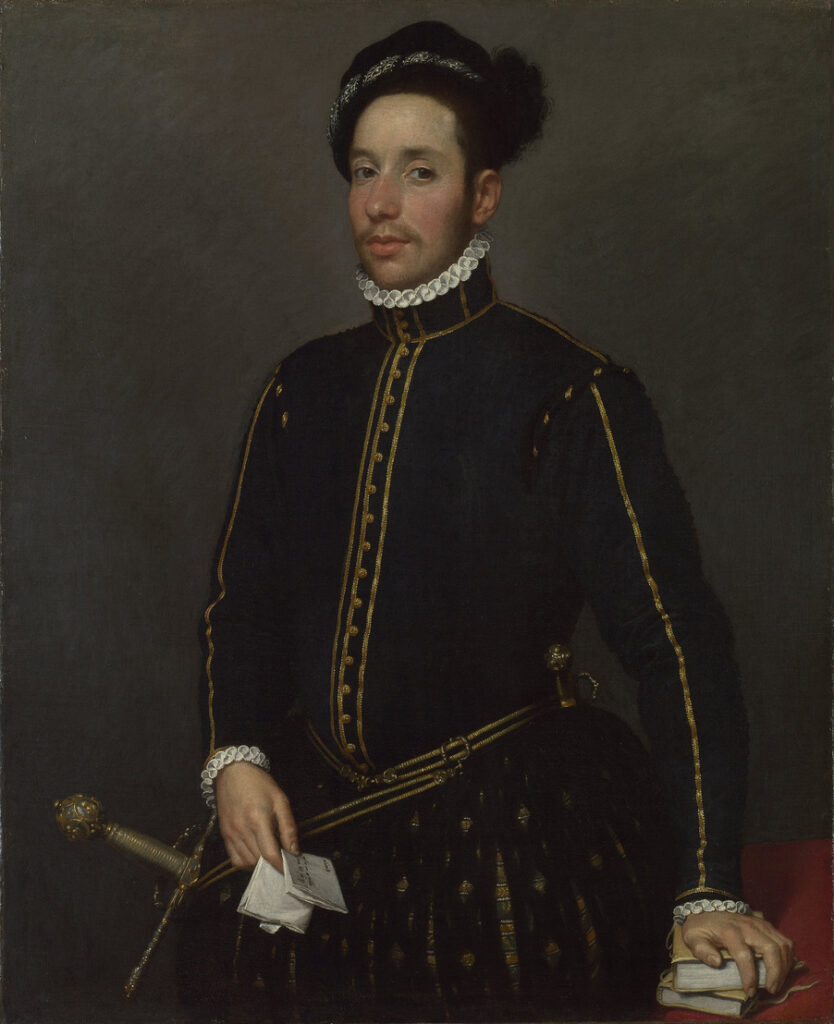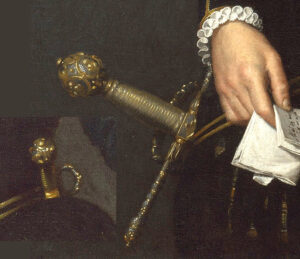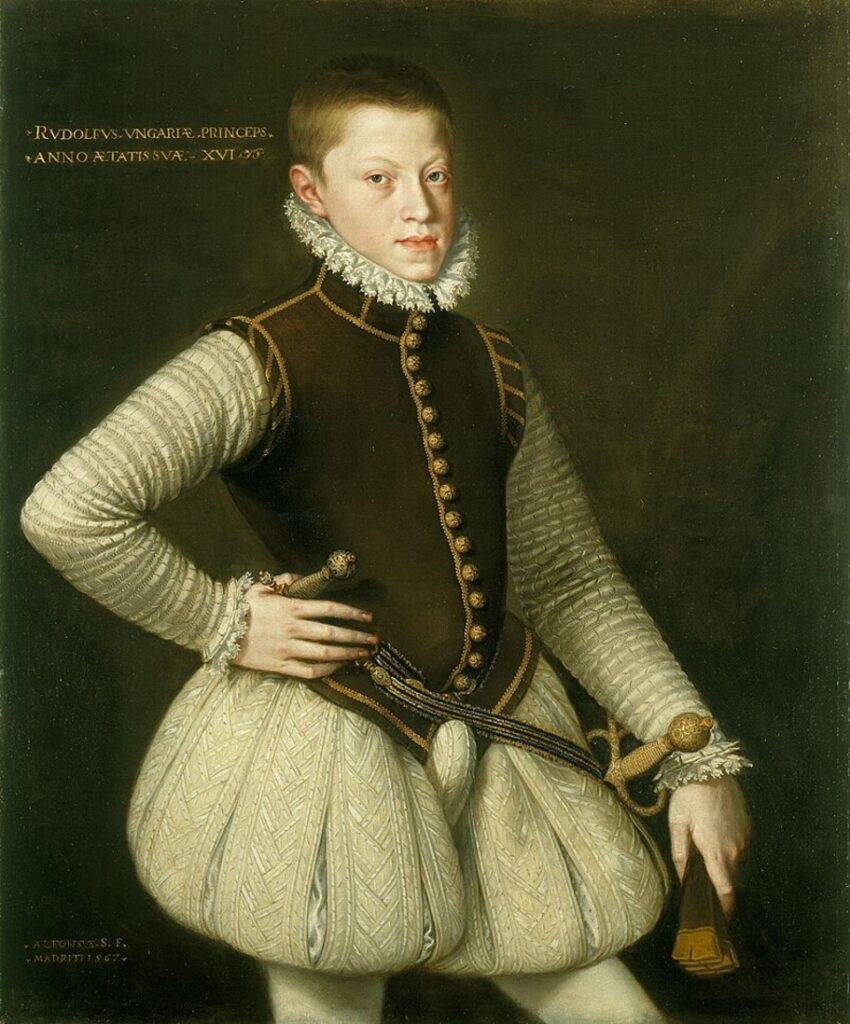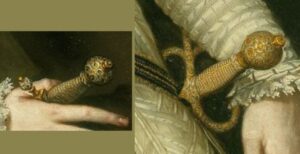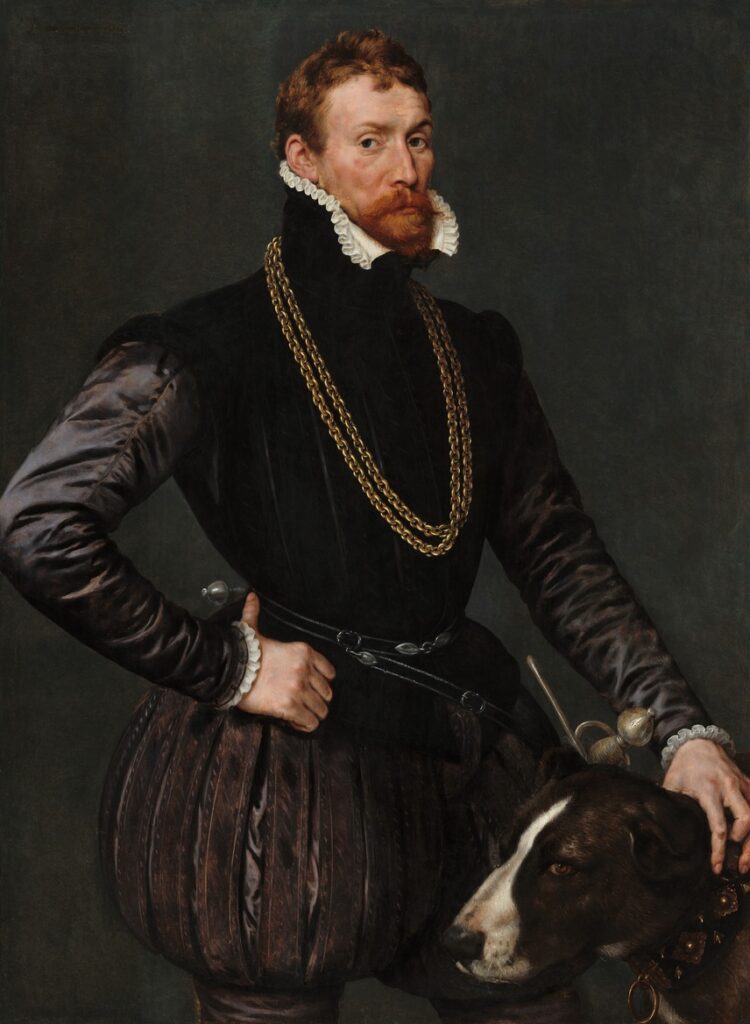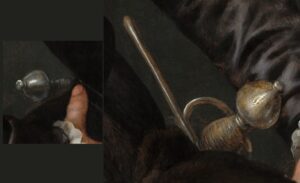Please see the introduction of this series for general information about this project.
This part of the series is a little particular, as it is centered on something I had not initially looked into before launching the project. I was already content with what I had from the manuscript and the museum examples, and therefore only indirectly included portraits, in as much as A.V.B Norman bases much of his datation of hilt forms on their presence on paintings.
I eventually got curious about them and realized that there was a wealth of people pictured in costumes very compatible with the manuscript – doublet, bulbous hose, small ruffle at the collar, the small bonnet with feathers. What is particularly pertinent for the project is that these portraits show swords and sometimes daggers with much more details than could possibly be included in the plates of Lovino’s manuscript, with accurate hilt types and even decorative details.
Here I will share a selection of ten portraits that I find particularly notable, in chronological order. A point of interest is that the portraits I have found are predominantly from the decade 1560-1570, with only a few found in the 1570s. It seems fashion changed a little bit in this decade, not perfectly reflecting Lovino’s manuscript any longer (see the differences explained between the 1560s and the 1570s). This might point to a manuscript in the making quite a bit before the dedication, which cannot be earlier than 1575.
Alessandro Farnese (1560)
This portrait by Sofonisba Anguissola depicts a fifteen year old prince in rich clothing. The details of decoration over the whole figure are particularly well rendered. The sword hilt barely shows, but it is apparent that there is at least a ring on the quillons. The decoration on the pommel is in very good correspondance with Lovino’s manuscript, a sphere with golden ribs. There seems to be a mix of golden and plain or blued steel on the hilt elements. There is at least one decorative element (probably two, by symmetry) on the ring that recalls the pommel.
Don Juan of Austria (1560)
This portrait by Alonso Sanchez Coelho (a prolific portrait painter of this period) shows us another young prince. It is particularly interesting because it gives a full view of the dagger matching the sword. Daggers were worn on the back, with the hilt to the right, and are therefore often obscured, or showing only their pommels.
The sword seems to have a simple hilt with no ring on the quillons, no knucklebow. The quillons are slightly curved. The decoration seems to be achieved by a sort of checkered chisel work (this shows up on other portraits, and on museum examples). The dagger has a big ring and S-curved, rather short quillons.
Gian Gerolamo Grumelli (1560)
This portrait by Giovanni Battista Moroni depicts a less princely sitter, that I find fits the manuscript very well. The artist is the author of many other portraits relevant to the project. The sword here is a simple type 39. The bars seem to be faceted and partially gilded. There are bulbous, fluted decorative elements at the end of the quillons and on the ring, and most likely the pommel would look like them. This is quite possibly the best overall match for Lovino’s plates and context.
Don Gabriel de la Cueva (1560)
Another portrait from Moroni, which perhaps is not that good of a match costume-wise, but particularly pertinent because the sitter was the Spanish governor of the city of Milan from 1564 to 1571. It is therefore very likely that Lovino knew him!
His sword is clearly visible, with outer guards of type 43 and inner guards of type 9. The pommel is matched with the quillons ends and with pairs of decorative elements on the rings, once again. The hilt appears to be fully gilded. The fluting could be a good match for the manuscript but the pommel type is different.
Anonymous fencer (1562)
Although it is not as good of a match either as far as clothing is concerned, I could not possibly omit this portrait of a fencer! The sitter poses with sword, dagger, armoured left-hand glove, and wears a mail shirt. On the wall behind him is another sword and a rotella. Given the date and assumed location in Emilia, it gives us an idea of the people Lovino must have practiced with.
His sword seems to be a type 30 made of blackened steel with chiseled and gilded decorations. Again the pommels of the sword and dagger match and are recalled by elements at the end of the quillons.
Anonymous left-handed gentleman (1564-5)
This other portrait by Moroni is very distinctive because the sitter appears to be left-handed.
It is difficult to be certain of the type of guard on the sword, beyond the fact that it has no knucklebow and a ring on the quillons. The dagger also has a small ring. The quillons are thin and long, again with gilded decorations on the steel.
Archduke Rudolf of Austria (1567)
Another portrait by Coelho showing a young prince. We get a good view of the dagger here. It has very short quillons and probably no ring. The pommels and hilts are again matched, with an interesting pattern of circular gilded motifs. There is no certainty about the sword’s type, but it has a simple hilt again, with a ring on the quillons.
Charles IX of France (1569)
It is also hard to pass that portrait by the great painter François Clouet. This is the elder brother of Henri III, who Lovino dedicated his treatise to. He was king just before, 1560-1574. The costume matches the plates really well.
It is also an illustration of just how much cover the hilts could give at this date. The outer guards are probably Norman’s type 37 here, while the inner guards form type 11. All told this would give a great cover to the swordsman’s hand on both sides. The hilt seems to be fully sculpted and gilded, as you would expect of a kingly weapon. The structure formed with flattened bars is quite interesting; note how the knucklebow and the other guards form a 90 degrees angle at the root of the quillon, giving it a square section near the quillon block.
Anonymous gentleman (1569)
The sitter of this portrait by Anthonis Mor is unknown, but the quality of the painting warrants its inclusion.
Although the sword and dagger do not show much, they are interesting by their sheer simplicity compared to all the other. The hilts seem to be plain smooth steel, but maybe the golden highlights here represent damascening too thin to show up? The sword also has the long quillons that we have already met on the left-handed gentleman.
Archduke Wenceslaus of Austria (1574)
A last portrait from Coelho, again of high nobility, again of a fairly young boy, at 13 years old (the sitter eventually died at 17).
This time we get an extremely good view of the sword’s hilt. It is unequivocally of Norman’s type 28, with straight quillons, bulbous elements at their ends as well as on the rings recalling the pommel. There is an alternance of gold and silver or plain steel on many of the elements.
Finally, here is a list of portraits that I have not detailed here but could also be relevant:
- Dwarf of Cardinal de Granvelle (1550-1560)
- Massimiliano Stampa (1557)
- Alessandro Farnese (1559)
- Anonymous gentleman (1560s?)
- Francesco I de Medici (1560)
- Anonymous gentleman (1560s?)
- Sir Nicholas Throckmorton (1562)
- Pietro Secco Suardo (1563)
- Infante Don Carlos of Spain (1564)
- Sir Thomas Gresham (1565)
- Il cavaliere in nero (1567)
- Jacoppo Strada (1567)
- Erzherzog Karl II. (1569)
- Hercule-François, Duc d’Alençon (1572)
- Erzherzog Albrecht VII (1573)
- Erzherzog Matthias (1579)
In the next article in this series, we will seek museum swords that might fit into Lovino’s context.
